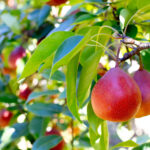Ecuadorian yellow dragon fruit making waves in the U.S.

Despite being a relatively young sector, the Ecuadorian yellow dragon fruit business is flourishing in the U.S. market, with demand exceeding current supply, according to the Agricultural Marketing Resource Center (AGMRC).
FreshFruitPortal.com spoke to Francisco Ortega, executive director at Finca Procel, about the exciting year ahead. The farm, which sits in the middle of the Ecuadorian Amazon rainforest, specializes in the Palora variety.
Ortega explains that, although the U.S. only granted admission to the Ecuadorian yellow dragon fruit in 2017, the sector is ready and eager to conquer the market.
"We have received support from different sectors of the industry and also from the government, which makes Ecuador today the largest producer of yellow dragon fruit in the West," he said.

The executive said that the South American country is well prepared to cover the demand, with over 4,500 hectares planted for the Palora variety, which is also the name of the main cultivation area.
In the U.S., only California, Florida and Hawaii produce dragon fruit commercially. The growing demand is partly covered with the red dragon fruit imported primarily from Vietnam.
Related articles: Ecuadorian bananas start the year with good export numbers
However, the Palora variety is starting to make waves as consumers look for its health benefits, making it a popular purchase among the 56 countries to which it’s exported today.
“Prices for yellow pitahaya are very attractive, because in Ecuador we have three production peaks per year. When they are finished, the fruit is even sold here to our producers at 6 dollars per kilogram (2.20 pounds). And the biggest customer is the U.S., followed by Hong Kong, Singapore, Canada and Spain,” Ortega explained.
The executive noted that Ecuador’s young sector is learning from its mistakes. The industry’s inexperience has led to saturating access points for the fruit, negatively impacting prices for exporters.
“For the U.S in particular, we are starting to work on a marketing plan to unburden the access points and to be able to go a little further inland, where the price would be more sustainable”, he said.
Next stop: China
Finca Procel is leading the charge in the country’s latest challenge - securing admission to China.
“After eight years of negotiation, we have managed to finalize all the phytosanitary requirements requested by China. There is no additional information to send, there is no other step to take, we are just waiting for the ‘ok’ to start exporting yellow dragon fruit,” Ortega said.
While China produces both the red and yellow varieties, Ortega said that the latter is usually referred to as “the Rolls Royce” of fruits, due to its elevated production costs.
This is where Ecuadorian dragon fruit can shine, as the country’s climate allows for good crops with cheaper input charges.
“We are meeting with the Minister of Agriculture precisely to define strategic axes focused on our Palora dragon fruit to go with a segmented marketing to the most important parts of high consumption in China,” Ortega said.














































